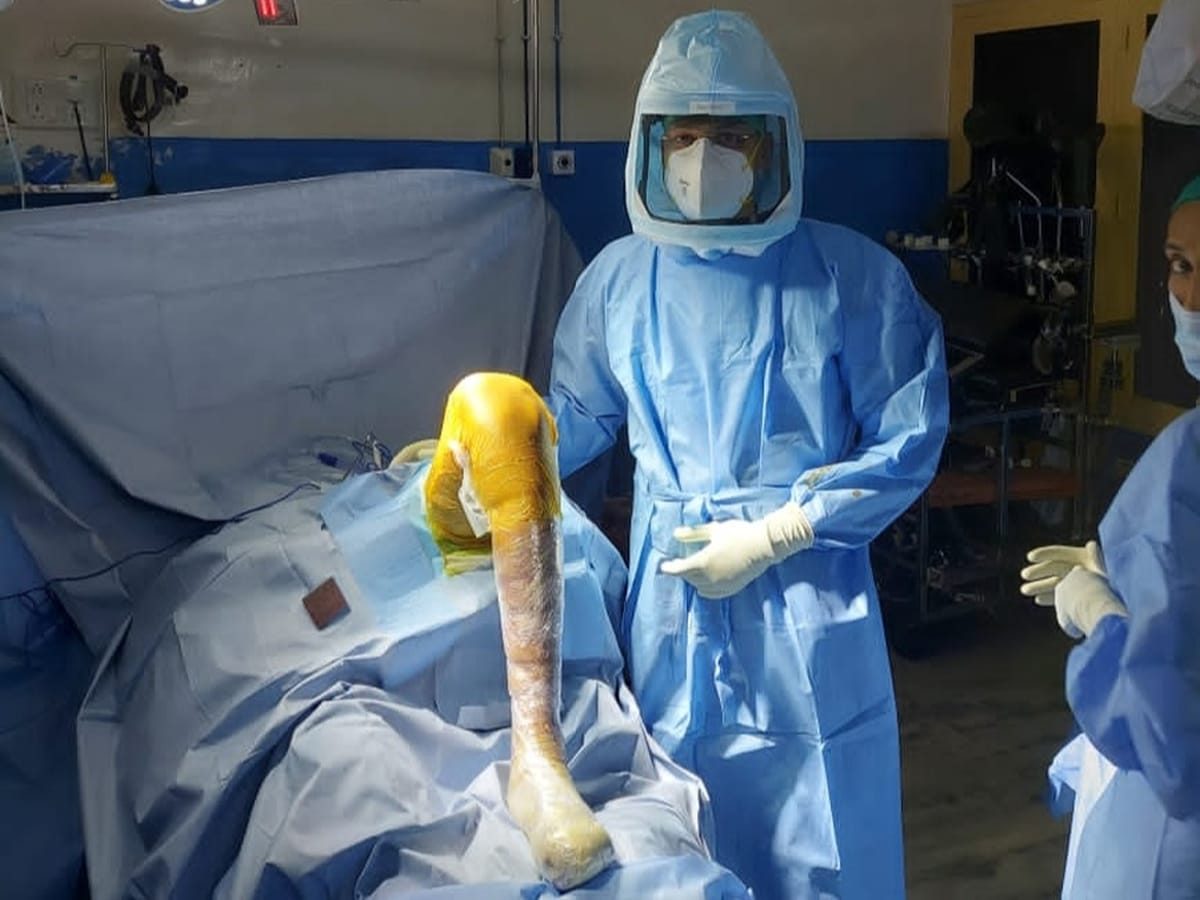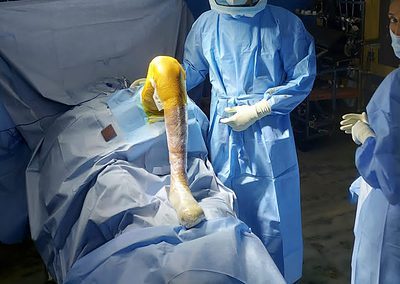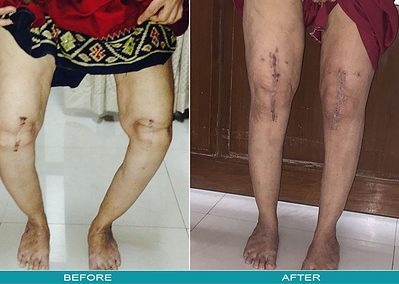Joint Replacement surgery is now commonplace in India. Various technological breakthroughs are advertised regularly. Implants have recently been made cheaper too. People however still remain skeptical at large about surgical treatments. Dr Yogeesh explains how combining technological advancement sound surgical technique and correct patient selection remain the most important factors in order to achieve success consistently. People need to understand their joint problems and plan their own treatment following consideration of correct individualized options. Dr Yogeesh Kamat runs a specialist service at KMC Hospital, Ambedkar Circle, Mangalore exclusively for Hip & Knee Joint Replacement and Sports Injuries.
Joint Replacement Surgery is well established as a successful treatment for severe arthritis of the hip and knee joints. In the cities there is increased advertisement of new technology. Private healthcare in India is undoubtedly at par with that in the developed world in terms of these advances. With the development of our middle class and increased proportion of people having health insurance, advanced private health facilities are available to many.
Should I have surgery or not ?
People continue to be skeptical at large when advised surgery despite it safer. We are also in an environment where confidence in doctors is declining. In this situation, the best solution for the people at the receiving end is to educate themselves about their disease. Correct education does not come from published advertisements relating to new technology, but from comprehensive articles on the subject that describe options of treatment at the various stages of the particular disease condition. Second opinions from different doctors may be good too. However there are two very vital clauses here: (a) understand the right specialist to approach for the particular problem and (b) do not approach someone with a report, but with the patient and his or her problem. Human beings are not machines. Different people with the same report often do better with different treatments. Similarly reports often have mistakes and, if heeded to without thorough examination of the patient could lead to wrong surgery.
Why are surgeries unsuccessful ?
Every surgery or medical treatment has a certain rate of complication or risk associated with it. The commonest reason for complications or dissatisfaction following joint surgery is inappropriate surgery for that patient. Patient education in relation to any surgery is of utmost importance and that is often ignored. It would be surprising, but the fault often lies with the patient for not communicating their complaints properly and not undergoing the other important treatment like rehab recommended following surgery correctly.
How has technology changed ?
Technology is ever evolving as is science. It is however important that new things are not employed without proper testing of their positive and negative impacts. With joint replacement, new designs regularly come out and are attractively advertised. There is also a gross misconception that imported expensive implants are direct determinants of success. While it is true that implants do need to be well standardized and this has largely been achieved by internationally reputed manufacturers, the implant itself will not do well without implementation of good surgical technique. It is more important to have immaculate theatre design, good infection control principles and a dedicated specialist team that regularly undertakes such specialist work to achieve success. Modern technology like computer navigation and patient specific instruments have not transpired into better patient outcomes around the world. At the same time, techniques like enhanced recovery with early return to walking, proper bone cement usage with vacuum mixing and improved operation theatre principles have certainly shown success.
Is costlier better?
There is no science to prove that a costlier implant is better, beyond standardized implants that have been around for many years. Implant cost is now further subsidized such that most implants cost similarly within a narrow range. Maintaining theatre design however comes at a cost. Subsidising costs in that aspect would only translate into poor technique with higher complications. At the same time, many standard hospitals with such facilities have quite economic packages to undertake joint surgery. They also accept government schemes, that make the procedures accessible to a large section of the community.
What do I do if I suffer from a joint related problem then?
If you are young, there are technologies to help prevent joint replacement and these need to be explored. Educate yourself and consult the appropriate specialist who will offer unbiased advice. Similarly, it is very important not to ignore a problem if it persists despite treatment. Development of arthritis can be prevented by appropriate treatment – rehab or minor surgery, but only at an early stage. Even for young patients with limited arthritis, there is newer technology with cartilage regeneration that has good promise. Cartilage procedures have no role in cases of advanced arthritis. Patients with severe arthritis who are strongly against surgery might have some solace in rehabilitative exercises. To conclude, I would like to say that JOINT REPLACEMENT IS NOT SURGERY TO TREAT JOINT PAIN. It is very successful treatment for advanced arthritis. The correct applicable treatment options can only be advised only after a face to face discussion and appropriate examination.



